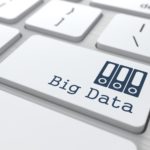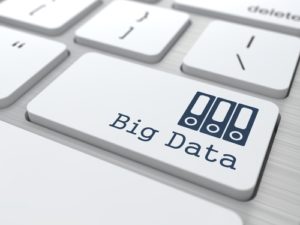At a conference in October devoted to exploring the perks of Big Data in higher education, the event’s keynote speaker had a surprisingly contrarian take on the subject.

“Big Data is bull—,” Harper Reed, the chief technology officer of President Obama’s 2012 campaign, said to an audience that included many campus IT officials hoping to learn more about Big Data’s benefits.
Reed, who used the power of data to help Obama secure reelection, said the term is just a marketing tool meant to drive college and university IT officials toward expensive technologies for storing and analyzing data.
If true, it’s a PR move that’s working.
The University of Rochester has spent more than $100 million on “Big Data research.” Indiana University spent more than $30 million for a building to house its $7.5 million Big Data-crunching super computer called Big Red II.
The Gordon and Betty Moore Foundation and the Sloan Foundation have pledged $37.8 million over five years to the University of California at Berkeley, the University of Washington, and New York University for a Big Data collaboration.
If there’s any current set of buzzwords that rivals the popularity of massive open online courses (MOOCs) in higher education circles, it’s Big Data.
But the phrase’s definition has a more elusive quality to it than the easily marketable free online courses. Just what is Big Data, and how are campuses using it, exactly?
“Big Data is this exponential increase of information that’s been going on since the 1950s,” said Jim Spohrer, the director of Global University Relations Programs at IBM, a company that has partnered with campuses to drive the study and adoption of data analytics.
Every decade since then, Spohrer said, has seen a certain section of business or society become a data leader. Maybe it was insurance companies in the 50s, he said, or the Sabre computer system for the travel industry in the 1960s.
Spohrer refers to the information collected by these entities as “small data.”
The small data has continued to pile up over the decades as information increasingly went digital, before finally exploding in growth in recent years due to online interactions.
Social media posts, online news articles, digital scans of academic journals, student financial aid profiles, online medical histories of patients, transportation system sensors – taken altogether, this is Big Data.
“We’re really at this stage in the last two years, where more data has been produced than ever before in human history,” Spohrer said. “It has become a new natural resource. An amazing natural resource.”
Spohrer and IBM, of course, would be the spin doctors Reed referred to in his keynote speech. IBM now has more than 1,000 university partnerships related to Big Data, including with Georgetown University, Northwestern University, and the University of Missouri.
In January, IBM donated their supercomputer called Watson, which famously beat long-standing champs on the game show Jeopardy in 2011, to Rensselaer Polytechnic Institute. Watson has 15 terabytes of memory and can read 200 million pages of text in three seconds.
With Big Data being comprised of so much information, it takes that kind of computing power to analyze and make sense of it all.
Indiana University’s Big Red II, one of the 50 fastest University-owned supercomputers in the world, can crunch a quadrillion pieces of data every second. In order for a human being to perform the same level of calculations, it would require the person to complete a calculation every second of every day for 31 million years.
The purpose of the Big Data that’s processed by these enormous and costly machines varies, but a primary one is helping universities continue their role as society’s go-to source of research and knowledge.
“With the ability to process huge amounts of data at an almost unimaginable speed, they have become an essential tool in expanding the frontiers of knowledge, addressing the world’s most critical issues and probing the most fundamental questions about the universe in which we live,” Michael McRobbie, IU’s president and former CIO, said when the computer was unveiled.
Universities also use Big Data technology to analyze their own student and faculty information — things like learning trends, financial aid statistics, and teaching costs.
At Wichita State University, for example, this kind of data is used to predict which students will succeed at the college before they are ever admitted.
Harper would call this “medium data,” but it is the kind of rapidly growing amount of information that learning analytics companies like Civitas Learning argue is also “Big Data.”
With so many universities and companies buying into the idea of Big Data analytics, another use of the information and technology has come into play: training students to become “data scientists.”
In two years, there will be an estimated 4.4 million jobs dealing with Big Data, but there are not that many students studying data science.
Skeptics like Harper have dismissed this “Big Data skills gap” as a corporate-created non-issue, but others see it as a booming market for which universities have an obligation to prepare their students.
Big Data degree programs since August have cropped up at George Washington University, University of New Haven, Bellarmine University, the University of Texas, and Northwestern University.
“This sort of thing usually happens when there is some kind of market shape up and companies and universities don’t know how to even fill a position,” said Ellen Wagner, executive director of the WICHE Cooperative for Educational Technologies. “When that happens, people think ‘we’ll have to create a new degree for this.’”
While universities that tap into this changing market early on do have an advantage, Wagner said, the job description of data scientists has yet to be fully defined.
“There is this concern that there’s a lot of hype around data scientists without knowing what it even is,” she said.
For some, that concern spreads to other facets of Big Data, as well. They worry that universities are sinking money into a murky swirl of hype and unnecessarily large amounts of information.
Part two of this eCampus News series will ask: is there a down-side to embracing Big Data?
Follow Jake New on Twitter at @eCN_Jake, and share your thoughts on Big Data with #eCNBigData.
- What does higher-ed look like in 2023? - January 5, 2015
- Are ed-tech startups a bubble that’s ready to burst? - January 1, 2015
- Are MOOCs really dead? - August 28, 2014

